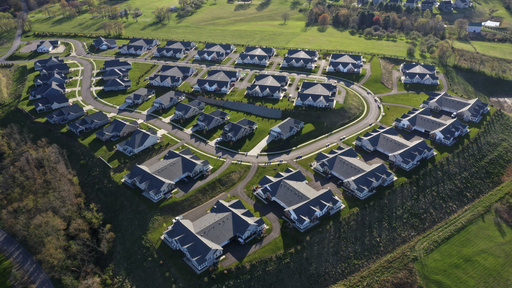LOS ANGELES (AP) — The average long-term U.S. mortgage rate climbed back to nearly 7% this week, pushing up borrowing costs for home shoppers with the spring homebuying season underway.
The average rate on a 30-year mortgage rose to 6.87% from 6.74% last week, mortgage buyer Freddie Mac said Thursday. A year ago, the rate averaged 6.42%. The average rate is now just below where it was two weeks ago.
Borrowing costs on 15-year fixed-rate mortgages, popular with homeowners refinancing their home loans, also rose this week, pushing the average rate to 6.21% from 6.16% last week. A year ago it averaged 5.68%, Freddie Mac said.
When mortgage rates rise, they can add hundreds of dollars a month in costs for borrowers, limiting how much they can afford in a market already out of reach for many Americans.
“After decreasing for a couple of weeks, mortgage rates are once again on the upswing,” said Sam Khater, Freddie Mac’s chief economist.
Investors’ expectations for future inflation, global demand for U.S. Treasurys and what the Federal Reserve does with its short-term interest rate can influence rates on home loans.
After climbing to a 23-year high of 7.79% in October, the average rate on a 30-year mortgage has remained below 7% since early December. Rates eased amid expectations that inflation was cooling enough for the Fed to begin lowering its short-term interest rate by this spring. But a spate of stronger-than-expected reports on inflation, the job market and the economy in recent weeks dimmed that outlook, sending mortgage rates higher through most of February.
Many economists expect that mortgage rates will ultimately ease moderately this year, but that’s not likely to happen before the Federal Reserve begins cutting its benchmark interest rate. On Wednesday, the central bank kept its rate unchanged and signaled again that it expects to make three rate cuts this year, but not before it sees more evidence that inflation is slowing.
“The Fed’s announcement that it is holding interest rates steady for now was not unexpected, but it does mean that mortgage rates are going to remain higher for longer,” said Lisa Sturtevant, chief economist at Bright MLS.
The U.S. housing market is coming off a deep, 2-year sales slump triggered by a sharp rise in mortgage rates and a dearth of homes on the market. The overall decline in rates since their peak last fall has helped lower monthly mortgage payments, providing more financial breathing room for homebuyers facing rising prices and a shortage of homes for sale this year.
Sales of previously occupied U.S. homes rose in February from the previous month to the strongest pace in a year. That followed a month-to-month home sales increase in January.
Still, the average rate on a 30-year mortgage remains well above where it was just two years ago at 4.42%. That large gap between rates now and then has helped limit the number of previously occupied homes on the market by discouraging homeowners who locked in rock-bottom rates from selling.
This website uses cookies so that we can provide you with the best user experience possible. Cookie information is stored in your browser and performs functions such as recognising you when you return to our website and helping our team to understand which sections of the website you find most interesting and useful.
